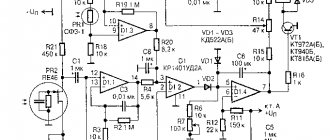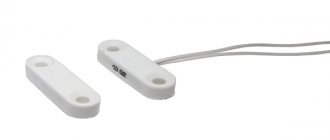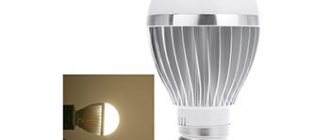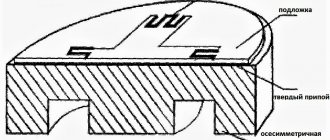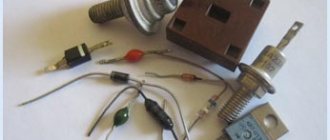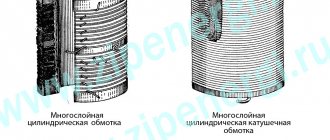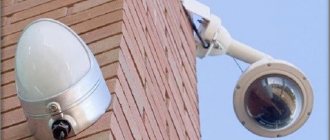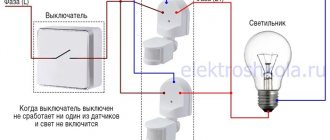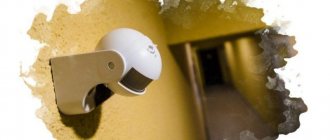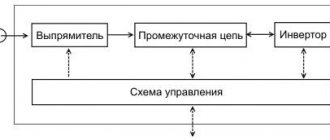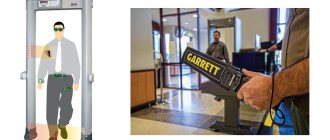It is unwise to turn on lighting in some rooms or outdoors for the entire dark period. To ensure that the light turns on only when needed, a motion sensor is installed in the lamp’s power circuit. In the “normal” state, it breaks the power circuit. When a moving object appears in its coverage area, the contacts close and the lighting turns on. After the object disappears from the coverage area, the light turns off. This operating algorithm has proven itself excellent in street lighting, in lighting utility rooms, corridors, basements, entrances and stairs. In general, in those places where people appear only periodically. So, for savings and convenience, it is better to install a motion sensor to turn on the light.
Purpose and application
Initially, motion sensors were used to protect the territory inside and outside the building. Later the scope of application extended to the private sector. Modern technologies make it possible to control lighting using various similar devices.
Security systems
The devices used to protect the territory, when triggered, can turn on lighting, video cameras and alarms. IR detectors are often installed indoors, which are configured to monitor open space. However, for narrow corridors it is better to choose an ultrasound or radio wave device.
Externally, sensors that respond to thermal radiation and a combined type are used. To protect the perimeter, it is more important to choose active ones.
When it comes to car security systems, compactness is important. Ultrasonic and radio wave equipment have this parameter.
Lighting control
To turn on the light, as a rule, passive sensors that respond to thermal radiation are used. The main parameter for selection is the range. It is 12 m.
The viewing angle may vary. Triggering only occurs when a person is in the controlled area. If a light sensor is built-in, the lighting does not turn on during daylight hours. This allows you to save on wasted electricity.
In smart home systems
The various technical devices that the house is equipped with are controlled via a remote control or mobile phone. For this purpose, various types of sensors are installed.
Devices that respond to movement are functionally designed to turn on lights and protect the territory. Any changes in the security system are recorded by video cameras that are automatically sent to the traffic zone. The owner and the security guard simultaneously receive a signal about this.
Lighting can be configured in two options:
- shutdown occurs after a configurable period of time;
- the light is on for the entire period that a person is in the sensor’s coverage area.
Description of the operation of motion sensors to turn on the lights
Automatic control systems for internal and/or external lighting are a concrete solution to many complex and pressing problems. For example, the lowest consumption of electrical energy, a significant reduction in the cost of electrical charge of batteries of autonomous presence detectors, reducing the operating time of lighting equipment, thereby extending their service life and many other important tasks.
The sensor equipment is directly mounted into the general lighting system, and when an object appears that moves, the motion recorder sends a signal to the lighting equipment. The light turns off after a while; in most models it is adjusted after the movement has completely stopped. Based on the wide range of equipment characteristics, you can easily select the necessary presence recorder that will meet all the requirements and desires of the buyer.
Important Features
The choice of device is based not only on the principle of operation, operating conditions and installation methods. An important parameter is the range of the device.
Viewing angle
The indicator is measured in degrees. Varies between 60-360 units in the horizontal plane and 15-20 units in the vertical plane. Ceiling sensors have the maximum value, wall sensors have the minimum value.
Street sensors are designed for maximum coverage of the protected area. Therefore, the viewing angle is over 180 degrees.
Range
The units of measurement are meters. Range is considered in three planes:
- perpendicular to 40 m in diameter (movement along a tangent circle);
- frontally up to 20 m (towards the device);
- presence (under the sensor).
Installation method and location
Installation work depends on the design features of the sensors. There are devices for indoor and outdoor use. The latter have a body protected from the effects of natural phenomena. A wider range of permissible operating temperatures is also provided.
The following areas are excluded for installation of sensors:
- near air conditioners and humidifiers;
- near natural or forced ventilation;
- near heating appliances.
To avoid false alarms, it is recommended to install devices on supporting structures, where the presence of direct sunlight is minimal. The latter can illuminate sensitive detectors. Based on the installation method, the following models are distinguished:
- Cabinets for outdoor use.
- On the ceiling, the device covers the entire perimeter around the circumference (with a diameter of 10-20 m). Installed for lighting, security or turning on any mechanisms at a height of 2.5-3 meters from the floor.
- Sensors on the wall have a limited effect relative to the area covered.
Built-in models are partially recessed into the base. That is, only the receiving surface and the decorative frame remain visible. The entire mechanism is located in a niche in the wall.
Additional features
Modern devices are designed to have advanced features. That is, they not only triggered movement and signaled it, but also additionally performed other tasks.
Light sensor
The radius of action is often 180 degrees, but there are models with full circle coverage. During movement, the circuit closes and the light turns on.
Animal protection
Ultrasonic and radio wave sensors automatically repel animals because they perceive them and cause discomfort. The waves also have a negative effect on humans, but imperceptibly.
IR devices can be configured so that they are not triggered by animal movement. This feature is also available in some models of combined sensors.
There are devices in which the settings are carried out in accordance with the weight of objects. So, if the permissible value is adjusted to exceed the animal data, then there will be no reaction.
Light off delay
There are detectors that have a built-in light switch-off timer (timer). Then the operation will occur within the time required by the consumer.
Autonomy
A stand-alone motion sensor is powered by batteries or rechargeable batteries. Can be equipped with a GSM module to work with a mobile phone. Compatibility with CCTV cameras is allowed.
Editor's Choice
ORBIS OB134920
ORBIS OB134920.
Photo: market.yandex.ru The infrared sensor reacts to the appearance of people or animals. You can program it using the remote control. The device operates from the mains, turning on the lighting when an object is detected within its range. The device can operate at high temperatures (up to 40 º C), the minimum operating temperature is ー10 º C.
The editors chose this sensor as the best for several reasons. First of all, it has high power, which allows you to connect more lighting sources to it than to other standard sensors. Another serious advantage is that it can be placed at a high altitude, up to 12 m, which means the sensor can be installed, for example, under the roof of a two-story house. A high degree of moisture protection makes it possible to use the device outdoors (but only in the warm season), and a large 360° viewing angle allows you to cover a large area.
Main characteristics:
| Installation: | open |
| Material: | plastic |
| Maximum power: | 1500 W |
| Device width: | 140 mm |
| Device height: | 140 mm |
| Device depth: | 68 mm |
| Wire connection type: | screw |
| Protection class: | IP44 |
| Installation orientation: | horizontal and vertical |
| Adjusting the response threshold based on illumination: | There is |
| Adjusting the sensitivity threshold: | There is |
| Max. frontal range: | 30 m |
| Scan Angle: | 360 ° |
Advantages and disadvantages
Wide viewing angle, remote control, response to small objects
Users report sensors responding a little late, cannot be used outdoors in winter
show more
Main causes of breakdown or malfunction
A common cause of device failure is incorrect connection. If the sensor is constantly on and is triggered without taking into account the settings, then a malfunction of the device has occurred.
To repair and identify the causes, it is recommended to contact specialists. Moreover, it is better if they are representatives of the manufacturer. You can only check the settings and adjust them yourself.
The location of the sensor may also be incorrect. If there are factors nearby that influence the results, then false positives or lack of response will be ensured. For example, a volumetric IR sensor works more efficiently in a perpendicular plane than in a horizontal one; accordingly, the second option will reduce the possibility of operation.
How to accurately select a motion sensor to turn on the light
There are a certain number of specific criteria for selecting equipment for recording movement:
- Installation location. If the sensor is installed outside the room, then the IP protection level of the device should be from 55, the best option is IP 65. But if there is a canopy-type device protecting from precipitation above the equipment, then IP 44 can be used. Operation of the lighting switching device when moving an object indoors such as a house, cottage, garage and the like is possible with lower levels of protection.
- Impossibility of signal passage. Due to different types and types of sensors, there are different possibilities for interference with the sensor signal. For example, when using infrared recorders, there should be no obstacles in front of them; when using acoustic recorders, there should be no extraneous sounds or noise. But when using microwave and combined types of sensor-converting equipment, practically no external factors affect the signal quality. That’s why I install them in large warehouses, garages, emergency warning and alarm systems.
- Viewing angle. If the room has several doorways, then it is better to use a motion sensor with a detection angle of 360 degrees. If the room has one entrance or is a walk-through room, then you can use, for example, a detector with a 180-degree view, which will be directed towards the possible appearance of a person.
- Lighting system power. The power of a motion detection device directly depends on how much electrical power the lighting devices consume. The power value should be slightly greater than the power value of the lighting system.
- Radius of action. The effectiveness of a motion detection device for activating a lighting system is directly proportional to its operating distance. Basically, the response radius of the sensor ranges from 6-50 m. This parameter undoubtedly depends on where it is used. If you are in a cramped room, you can use a sensor with a minimum range. But in order to turn on lighting equipment outside a building or structure, a larger motion detection area will be needed.
- Photo relay. This is an additional module that is supplied with some sensor models. The photo relay is a light detector. The principle of operation is that if the illumination parameter is below the photo relay settings, the light turns on, and if it is higher, the light remains off. The presence of this element allows you to significantly save energy.
- Lack of ability to detect animals. There is a parameter of motion sensors that you also need to pay attention to. This function of the device allows you to avoid provoking the sensor to trigger due to the movement of various animals, which will save money on light.
The above selection criteria should help you correctly select the optimal and appropriate motion recorders designed to activate lighting equipment.
Designation on the diagram
In the diagram, the motion sensor is graphically indicated as a square with a triangular cutout. The latter plane is directed towards the covered territory.
The connection is made according to the circuit closing and opening circuit. If temporary and permanent lighting is intended, then a switch is installed in parallel. If it is disabled, then the lighting operates from the sensor.
There are two-wire and three-wire devices. The first ones, as a rule, are installed in a standard socket box. The connection follows the same principle as a switch with one key. The second ones are a little more difficult to connect, but the technology is the same. Only the zero phase connection is additionally provided.
Where to place
You need to install the motion sensor correctly to turn on the lighting - for it to work correctly, follow certain rules:
- There should be no lighting devices nearby. Light interferes with correct operation.
- There should be no heating or air conditioning units nearby. Motion detectors of any type react to air currents.
As the installation height increases, the detection zone increases, but the sensitivity decreases - There should be no large objects. They obscure large areas.
In large rooms it is better to install the device on the ceiling. Its viewing radius should be 360°. If the sensor must turn on the lighting from any movement in the room, it is installed in the center; if only some part is monitored, the distance is selected so that the “dead zone” of the ball is minimal.
Recommendations for placement
The plastic body of the device is easily damaged by impact. Therefore, you should avoid places where damage is possible. Outdoors it is worth installing a canopy to protect the device from the sun and precipitation.
Tilt angle
Most sensors, especially those that respond to thermal radiation, should be installed at angles of 90 degrees relative to the possible movement of the object. Any obstacles will negatively affect the full overview of the permissible territory.
Sensitivity
If the sensitivity is set incorrectly, the device will respond to all objects. In order to limit the reaction only to people, you need to set the mode to “medium”. The manufacturer provides information about this in the instructions.
Malfunctions
| The trigger illumination threshold is incorrectly set. | Adjust using the regulator. |
| The sensor window does not track movements. |
|
| The sensor is triggered falsely. |
|
How to connect to Arduino
Of no less interest is connecting a motion sensor to Arduino to organize a smart home.
To solve the problem you need to prepare:
- Arduino board;
- PIR motion control device;
- solderless breadboard;
- 220 Ohm resistance and LED;
- wires of the male-male and male-male types.
The name of the contact connections may differ from one manufacturer to another, so before performing work it is necessary to study the features of the module.
One pin is connected to GND, the next to VCC (5 V), and the remaining one to OUT (transmits a digital signal from the PIR sensor).
PIR sensors are almost identical in design. They have the necessary sensitivity at a distance of up to six meters, and visibility is 110*70 degrees. The output appears 0 or 1 depending on whether the fact of movement is detected.
Can I do it myself?
Despite the low price of sensors, many people try to make the devices themselves and save money. The advantages of such a solution are the ability to thoroughly understand the principle of operation, reduce maintenance costs and “tailor” the device to specific application conditions.
In addition, with proper assembly, you can reduce costs and even upgrade the system.
But there are also disadvantages. Before you start work, you need to purchase equipment, draw a diagram, decide on dimensions and other points. This requires experience and knowledge. However, there is no guarantee that the finished scheme will work.
If you decide to assemble the motion sensor yourself, prepare the following items:
- circuit assembly housing;
- set of elements;
- soldering iron and wires of different sections;
- fastening;
- screwdriver;
- other materials - electrical tape, pliers, cambric.
To turn on the lighting, a sensor with a photocell built into it will be used. A photo relay will act as a switch.
To collect the diagram you will need:
- capacitor (C1);
- operational amplifier DA1;
- phototransistor (VT1);
- resistance R1 to load the collector and create an operating point;
- resistor R2 to implement feedback.
When assembled correctly, the circuit works like this. After light enters VT1, the element is triggered and the phototransistor opens, followed by charging C1. When the voltage is removed from VT1, the capacitor discharges and the voltage decreases.
The light source for the photocell can be a simple laser or an infrared LED.
The assembly proceeds according to the following algorithm:
- Assemble the power supply, adjust it and monitor the current output.
- Connect a resistor to the negative of the power source.
- Connect the diode using the cathode.
- Connect a tuning resistor to the anode.
- Connect the transistor emitter to the negative wire of the power supply.
- Connect the resistor to the base circuit.
After assembly, all that remains is to test the correct operation of the product when light hits it. Possible errors must be eliminated immediately upon detection.
How to connect to a spotlight
Another issue that requires consideration is how to properly connect a motion sensor to a floodlight.
To do this, you can use one of the following schemes:
- WITH THREE CONTACTS. In this case, the phase is supplied from the shield to terminal L. From output A, the wire goes to the input L of the spotlight. Voltage is supplied when the motion sensor is triggered. Contacts N are combined and directed to the shield. The ground is sent directly to the spotlight and connected to the PE to remove possible voltage from the metal housing.
- USING A SINGLE KEY SWITCH. In the solution discussed above, the use of a switch is not provided. But this can be fixed. As a rule, the switch is mounted in a phase break (before the product that controls the movement). In this case, when the switch is turned off, the voltage is removed from the entire circuit. The second option for connecting the switch is parallel to the phase and the output of the motion sensor. With this solution, you can turn on the lighting without being tied to other devices. When the switch is turned off, the entire circuit operates as usual.
- USING A TWO-KEY SWITCH. In this case, a certain symbiosis of the two circuit solutions discussed above is introduced. One contact of the switch breaks the phase, and the second comes in parallel. When both buttons are disconnected, the voltage is completely removed from the circuit. When the first key is turned off, the sensor operates in normal mode and turns on the spotlight when movement occurs. If only the second key is activated, voltage is immediately applied to the lamp.
- TWO SENSORS. The same principle applies here as discussed above. Two movement-controlling organs are arranged in parallel, after which they are connected to the power circuit and the spotlight.
- CONNECTING THE LAMP TO A LOWER VOLTAGE. If it is necessary to turn on the spotlight at a lower voltage (12, 24 or 36), a power supply is installed in front of the input, reducing 220 V to the required level. In this case, three wires (with ground) are supplied to the power supply input; only power is sent to the sensor.
- FOR A SEPARATE PHOTO RELAY. When installing old motion controllers without a photo relay, the latter must be connected separately. In this case, the wire goes from the output of the sensor to the relay, and after that to the input of the spotlight. The zeros are combined and the ground goes towards the light source.
Above are the basic diagrams that allow you to connect a spotlight with or without a switch. Here everyone makes a decision taking into account the current tasks and characteristics of the room.
How to avoid false positives
To avoid false switching on of lighting in the circuit solutions discussed above, follow these tips:
- Do not place sensors near trees or heating devices.
- Always break only the phase.
- Make sure that light rays, for example from an incandescent lamp, do not penetrate to the sensor.
- Attach the product depending on the type (wall, ceiling).
- Do not install the device near air conditioners or windows where there is air movement.
- Make sure that the glass of the infrared product is clean and undamaged.
Following the above tips allows you to quickly and without errors connect a device to control lighting on the stairs, in an apartment or on the street.
